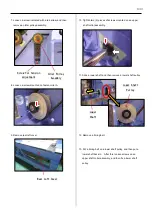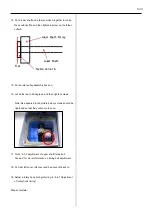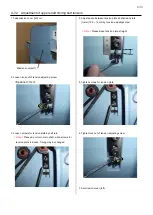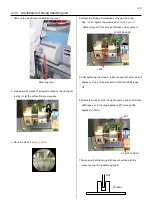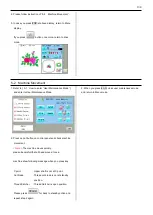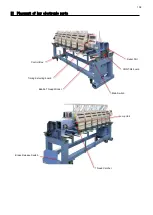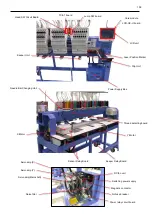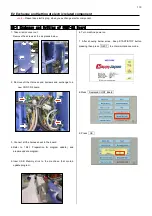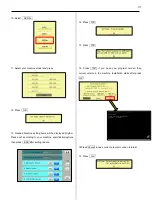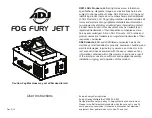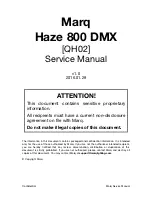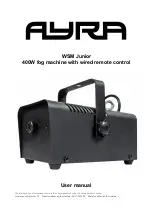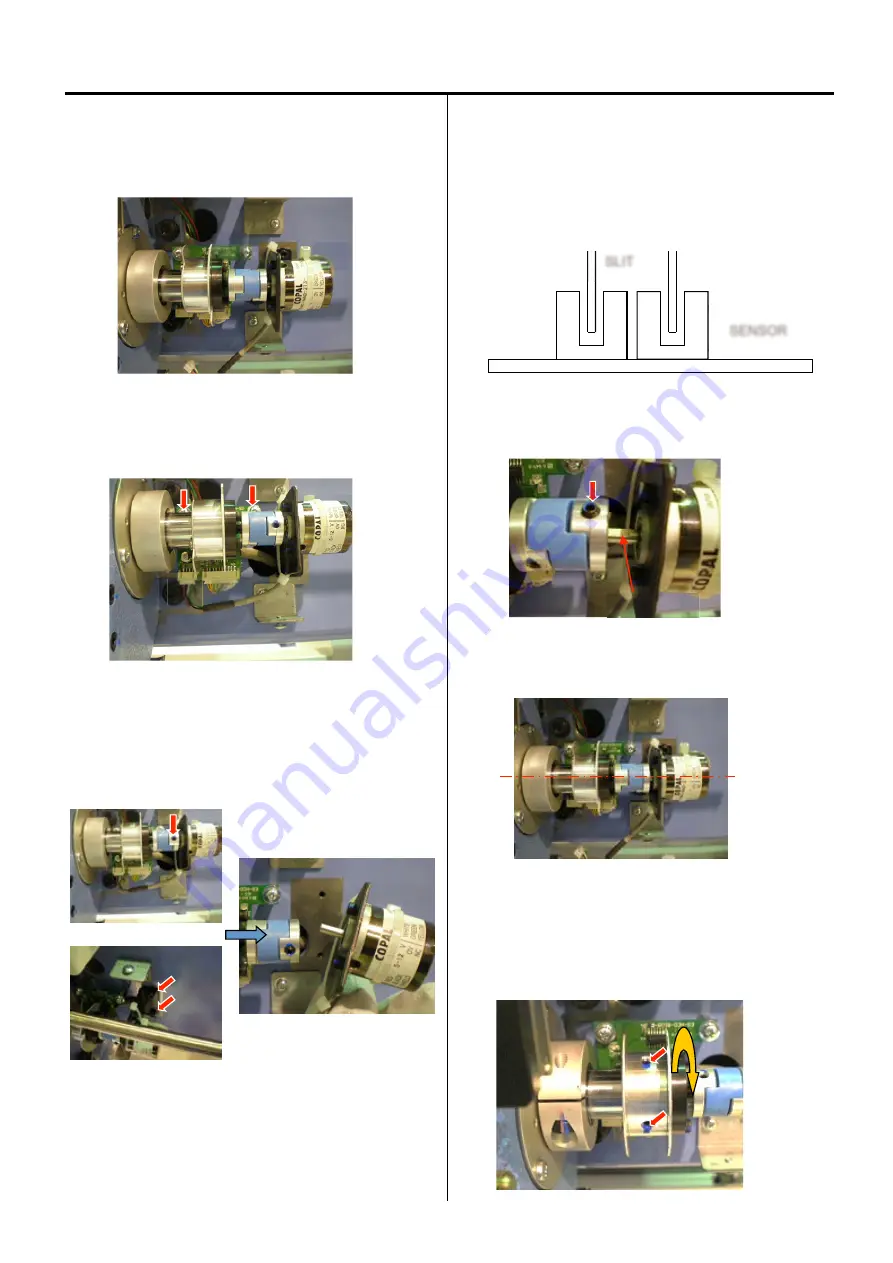
114
E
E2
2-
-2
2
E
Ex
xc
ch
ha
an
ng
ge
e
T
Ti
im
mi
in
ng
g
C
Ci
ir
rc
cu
ui
it
t
B
Bo
oa
ar
rd
d
1.
Timing detecting board consists of the board as shown
with A and the part as shown with
B
2. Take A part out.
Unscrew 2 screws, then take C cable and D harness out.
3. Take B part out.
Unscrew 3 screws.
4. Put the removed board (as shown with A) back on.
Then, put the removed cable (as shown with C) and
the removed harness (as shown with D) back on
and tighten the screws.
<
note
>
Make sure that the slits go further into the slots of
the sensors.
5. Put the part (as shown with B) back on. Then, tighten
the screws.
<
note
>
Make sure that the flat portion on the shaft of
the part (encoder as shown as B) matches the location of
the screw as appeared in the picture..
<
note
>
Check visually if the upper shaft and the shaft of
the part (encoder as shown with B) stay straight with each
other.
6. Loosen the screws mounted on the slit in order to let the slit
itself rotate manually.
SLIT
SENSOR
A
B
C
D
フラット
Summary of Contents for HCR3-1502
Page 1: ... Maintenance Manual for Embroidery Machine HCR3E SERIES Version 1 2 HappyJapan Inc ...
Page 104: ...105 4 7 3 Adjustment of timing detecting unit 8 Finally put the cover back on ...
Page 107: ...107 ...
Page 172: ...172 E7 Electric system diagram E7 1 Pulse motor driver PMD wiring ...
Page 173: ...173 E7 2 Pulse motor driver PMD setup ...
Page 174: ...174 E7 3 Inverter wiring ...
Page 175: ...175 E7 4 Electrical connection diagram ...
Page 176: ...176 ...
Page 177: ...177 ...
Page 178: ...178 E7 5 List of electrical connection diagram ...
Page 179: ...179 ...
Page 180: ...180 E7 6 Explanation of function clrcuit board HCD8122 LCD CE MX Board Ass y ...
Page 181: ...181 HCD8116 TP SW Circuit Board Ass y CN No Function CN1 Switch output LED input ...

